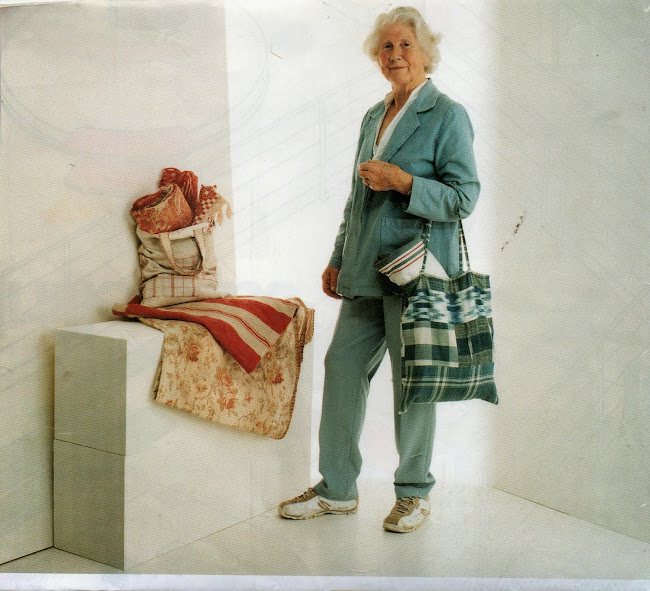Have a look at the example of red and white resist printing; indigo and rose madder vegetable dyes in resist printing on a strong background, were often often quilted by hand and used for curtains, pelmets and bedhangings and covers. Then if you look and compare it with the sample of my very useful indigo travel bag below, it just shows that good patterns never die and go on forever. The older patterns almost always have more fine detail!
 |
| Original hand blocked cotton prints, hand quilted, late 18th-early 19th C. |
 |
| Later print on heavy cotton, for a canvas carry bag |
 |
| Modern print by Borderline, Lots Road, London. |
The early block prints were made by hand with wax resist techniques and also with carved and moulded wooden and metal engraved blocks which were pressed on the blank background at regular intervals. The dyes and patterns often originated in the East, all of which were brought back from the East by the East India and other big trading companies who shipped them back to France, Holland and England to the main ports. These goods were eagerly awaited by fashionable and wealthy people and caused big problems for the home trade and often there were heavy taxes and restrictions on imports, and that made them all the more precious and desirable.The picture above is a very useful soft carry-all in coarse cotton from Polly Lyster. The patterns are very traditional and most go back to much earlier times. Although many of them are quite repetitive, they seem to have a lot of energy and style to them. Click on left of print to see Polly Lyster, next to Dorothy Reglar.








Just love the fabrics and the dyes.
ReplyDeleteI have some indigo dyed fabric bags from Anokhi.
Another wonderful post - thank you.
Diane.